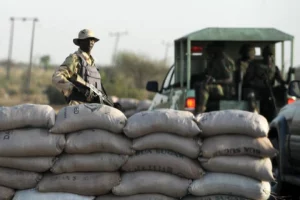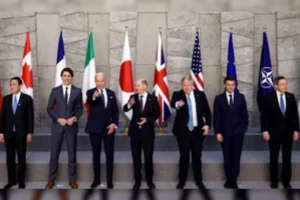With a belligerent China showing no sign of scaling down its unprecedented military build-up along the Line of Actual Control (LAC), Indian troops have no choice but to dig in for the long haul as winter approaches in the icy heights of the Himalayan border.
The meeting between the foreign ministers of the two countries in Moscow had raised some hopes of a de-escalation along the tense Ladakh border but China seems to be in no hurry to convene the army commanders meeting between the two countries on the withdrawal of troops. Clearly, the ball is in China’s court as it has triggered the current round of confrontation by first moving its troops into forward positions. Only if it withdraws to the original positions that the PLA was occupying in April, can Indian troops do the likewise. All India has done is to occupy advantage points in its own territory to ensure that it will be able to defend its border against any attack.
Meanwhile, there are intelligence reports that China is laying a network of optical fibre cables to the south of Pangong Tso in order to provide forward troops with high-speed secure lines of communication to their bases in the rear. The optical fibre cables, apart from being more secure, also have the capacity to carry pictures, maps and documents.
China has moved in tanks and high calibre artillery firepower to back up its troops as part of its muscle flexing, forcing India to respond in kind to meet the threat. The border is reported to be extremely tense as in some places the troops are virtually in an eye-ball to eye-ball confrontation.
Defence Minister Rajnath Singh told Parliament on Tuesday that "India remains committed to resolving the current issues in our border areas through peaceful dialogue and consultations." Singh said that he had conveyed to his Chinese counterpart – at the meeting on September 4 in Moscow – in clear terms concerns over China amassing a large number of troops, their aggressive behaviour and attempts to unilaterally alter the status quo at the LAC in violation of bilateral agreements between the two countries.
"I also made it clear that even as we wanted to peacefully resolve the issue and would like the Chinese side to work with us, there should also be no doubt about our determination to protect India’s sovereignty and territorial integrity," Singh said.
He also pointed out that China continues to be in illegal occupation of approximately 38,000 sq. kms in the Union Territory of Ladakh. In addition, under the so-called Sino-Pakistan 'Boundary Agreement' of 1963, Pakistan illegally ceded 5,180 sq. km. of Indian territory in Pakistan Occupied Kashmir to China. China also claims approximately 90,000 sq. kms. of Indian territory in the Eastern Sector of the India-China boundary in Arunachal Pradesh.
Singh said that if the agreement reached between External Affairs Minister S Jaishankar and Chinese Foreign Minister Wang Yi, in Moscow on September 10, is implemented sincerely and faithfully by the Chinese side, it could lead to complete disengagement and restoration of peace and tranquility in the border areas.
However, former foreign secretary Kanwal Sibal is of the view that while the joint statement issued by the two foreign ministers focuses on de-escalation and disengagement, it does not mention anything about withdrawing all troops to prior positions held in April this year. This is the crucial status quo ante clause that China does not seem to have agreed to.
Singh said in the past too we have had situations of prolonged stand-offs in our border areas with China which have been resolved peacefully. "However, although the situation this year is very different both in terms of scale of troops involved and the number of friction points, we do remain committed to the peaceful resolution of the current situation," he said.
China does not accept the customary and traditional alignment of the boundary between India and China. India believes that this alignment is based on well-established geographical principles confirmed by treaties and agreements, as well as historical usage and practice, well-known for centuries to both sides.
The Chinese position, however, is that the boundary between the two countries has not been formally delimited..




















